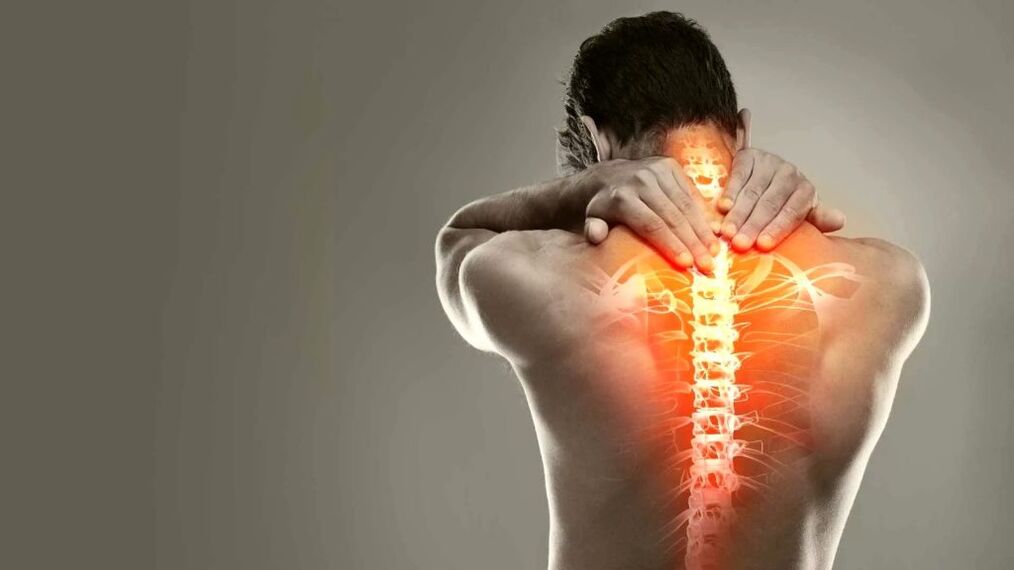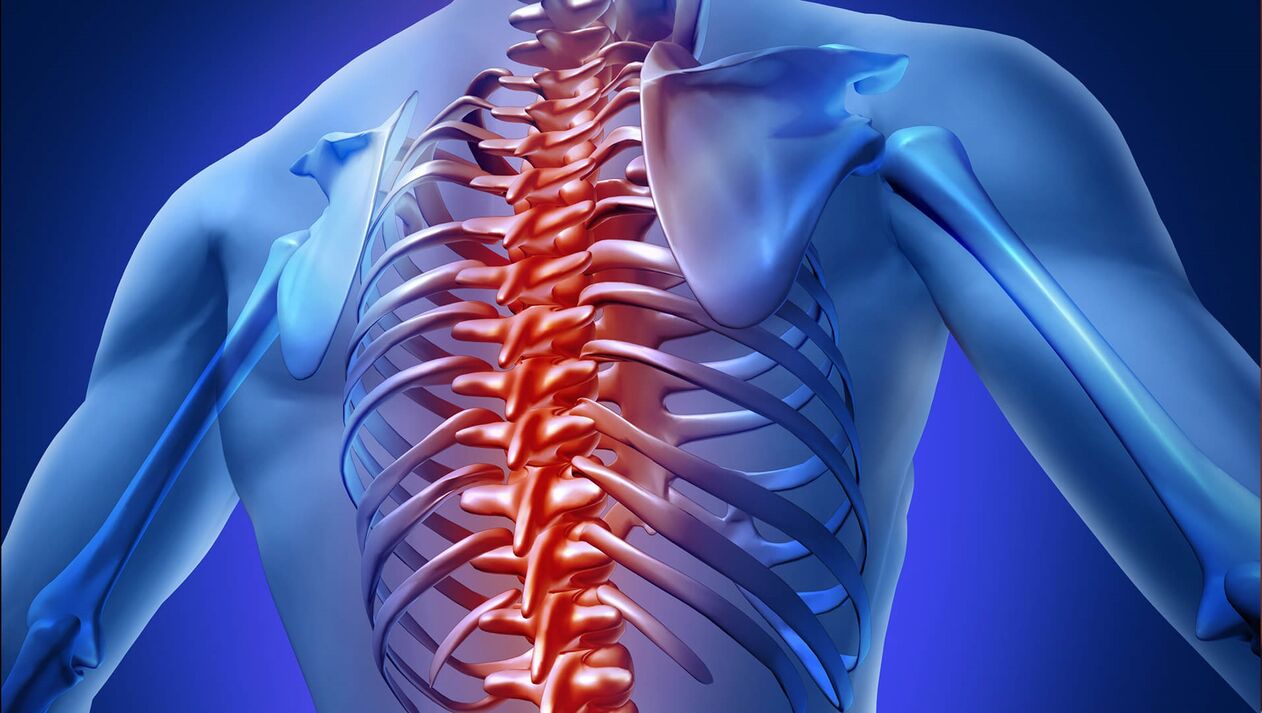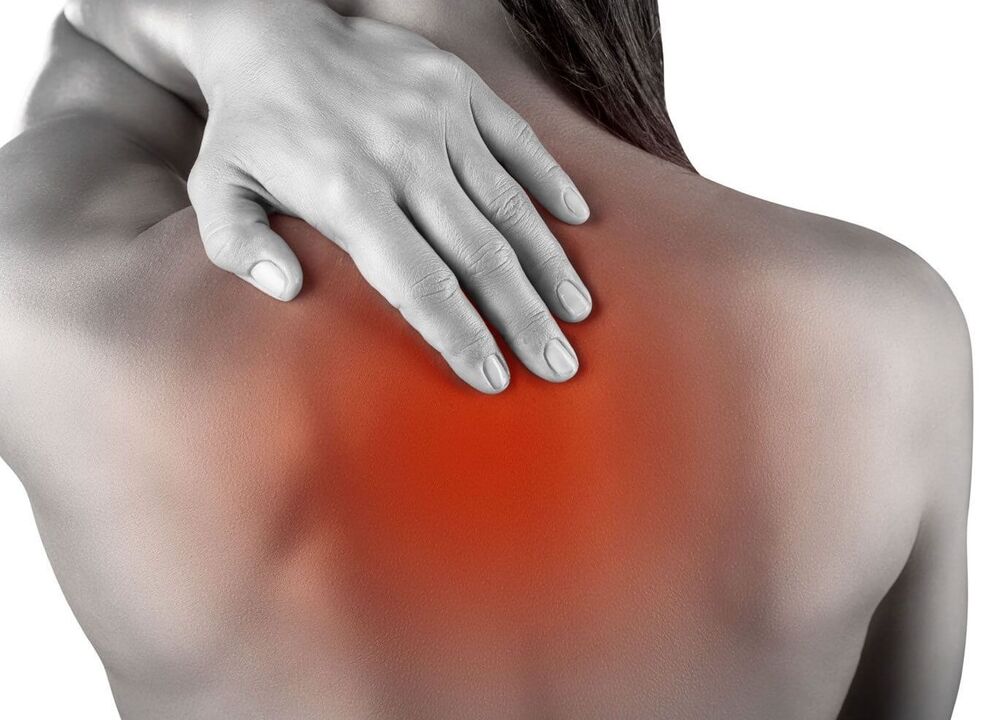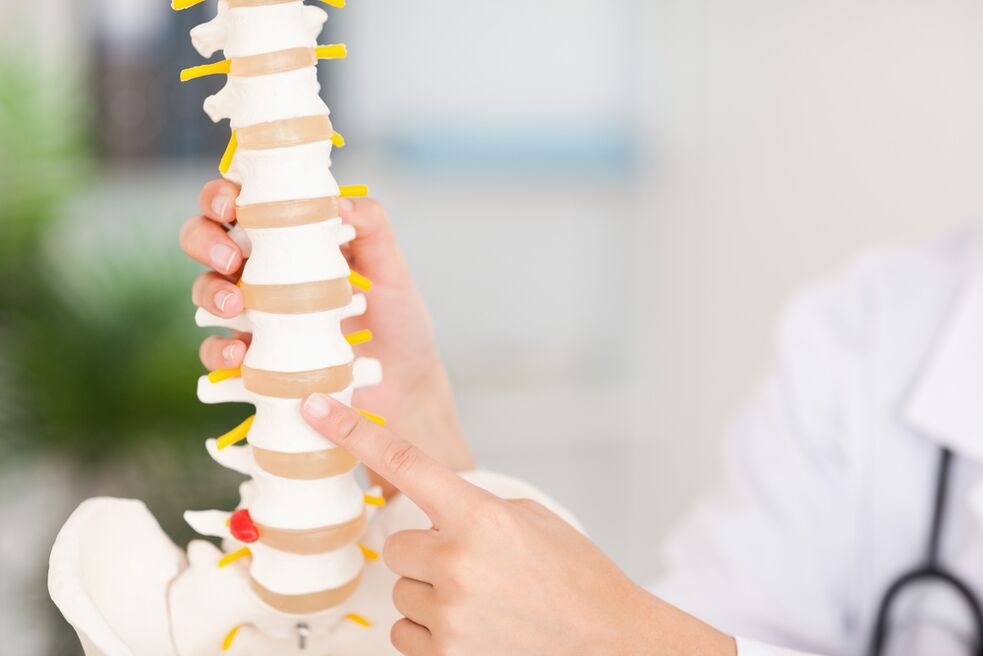
Osteochondrosis - dystrophic and degenerative changes in cartilage and bone tissue. Osteochondrosis of the spine can occur in the cervical, thoracic, or lumbar spine. The progression of the disease leads to the destruction of the ligaments, the structure of the joints, the intervertebral discs.
Osteochondrosis of the spine in the thoracic region is uncommon. This is due to the peculiarities of the structure. Its mobility is lower than that of the cervical and lumbar regions. Part of the load is absorbed by the ribs and sternum. Danger of pathology in the difficulty of diagnosis. The symptoms are similar to other diseases, they are detected rather late, which makes the treatment process difficult.
Causes of the disease

The development of thoracic osteochondrosis is associated with metabolic disturbances and increased strain on the intervertebral discs. Inside the intervertebral disc is the nucleus pulposus, which is surrounded by the annulus fibrosus. If damaged, the kernel will dry out and lose its depreciation properties. As a result of degenerative processes, inflammation and constriction of the nerve fibers in the spinal cord occur.
Causes of osteochondrosis may include:
- heredity;
- intervertebral hernia;
- presence of osteophytes;
- poor blood supply to the spinal cord due to constriction of blood vessels;
- violation of mineral metabolism (especially calcium deficiency);
- curvature of the spine, causing an uneven load on the plates;
- trauma to the chest region due to falls, bruises, collisions;
- strength sports, regular weight lifting;
- passive lifestyle.
Symptoms and feelings of chest osteochondrosis
Several factors influence the clinical picture of pathology:
- the degree of damage to the spine;
- the age of the patient;
- the stage of the pathological process (exacerbation or remission).
The symptoms of osteochondrosis of the chest are characterized by variety and not specificity, so the disease is often confused with other pathologies.
The main signs of breast osteochondrosis are:
- Dorsago - sharp, sudden pain in the chest and back ("chest lumbago"), the patient feels short of breath.
- Dorsalgia is a mild pain in the affected vertebrae that develops gradually over several weeks. The pain may increase with deep breathing, bending to the side and forward, and in a prolonged static position.
Severe belt pain and a feeling of breathing problems are associated with intercostal neuralgia in which the nerve roots are compressed. The intensity of the pain usually increases in the afternoon and decreases after an overnight sleep.
Neurological symptoms include:
- violation of limb sensitivity;
- numbness of the heart muscle;
- lung syndrome;
- tingling, burning sensation, numbness of the skin;
- muscle twitching and muscle cramps;
- feeling the presence of a foreign object in the pharynx when osteochondrosis is localized in the upper chest segment.
Intervertebral neuralgia is a concomitant symptom of degenerative-inflammatory pathologies of the spine (osteochondrosis, vertebral displacement, scoliosis). But its appearance is reminiscent of signs of various diseases of the peritoneal organs and chest region.
Note!Pain often occurs in the upper zones of the chest region, gradually completely covering, and in the area of the shoulder blades (reminiscent of angina pectoris). Pain in the right hypochondria occurs with osteochondrosis of the middle chest region. They can be diagnosed as inflammation of the pancreas or cholecystitis. Pain in the gastrointestinal tract occurs with lesions in the lower segment of the thoracic region of the spine, mimicking intestinal disease.
Stages of disease development

The extent of the disease is associated with pathological disorders of the spine characterized by certain clinical symptoms.
There are 4 periods of the disease:
- Grade 1- the appearance of cracks inside the fibrous ring, after which the fluid of the nucleus pulposus penetrates it. Pain syndrome appears, which is localized only in the affected area. Pain can occur in the area of the heart muscle, muscle cramps.
- Grade 2- abnormal mobility between the vertebrae, subluxations in the chest region. Prolonged static posture or movement may cause discomfort and increased pain.
- 3rd grade- rupture of the annulus fibrosus beyond the nucleus pulposus. Intervertebral hernias develop. This causes severe belt pain, limited mobility and other symptoms.
- 4 degrees- pathological processes extend beyond the spine. In degenerative-dystrophic lesions, the paravertebral ligaments are affected and fibrosis develops.
Diagnostics
Radiography is extremely informative. The presence of pathology is indicated by:
- uneven plate edges;
- enlargement and sharpening of uncinate processes;
- decrease in the height of the plates, deformation of their shape;
- presence of osteophytes.
Sometimes an X-ray contrast scan is performed. The contrast material fills the destroyed plate, allowing the degree of neglect of the pathological process to be determined. MRI and computed tomography are no less informative.
Effective treatments
How to treat osteochondrosis of the chest region? The approach to therapy should be comprehensive. The stage of development of the disease, the extent of the destructive processes and the general condition of the patient must be taken into account.
Drug therapy
Several classes of drugs are used to treat chest osteochondrosis.
- NSAIDs and muscle relaxants;
- Glucocorticosteroids. Their therapeutic effect is more pronounced than that of NSAIDs, but the risk of side effects is higher.
- Chondroprotectors. Cartilage protectants are thought to help regulate damaged cartilage tissue. But their effectiveness has not been definitively confirmed.
- Diuretics are used for a short time to relieve swelling of choked nerve fibers during the worsening of osteochondrosis.
Folk remedies and recipes

It is used more often during the remission period of the disease and only as an adjunct treatment.
Treatment of osteochondrosis at home using traditional medicine:
- Pour 30-40 g of chopped celery root with 1 liter of boiling water. Insist until 8 p. m. Drink 1 dessert spoon three times a day.
- 150 g of lard are melted with steam. Add 2 tablespoons of wax. Heat for 15 minutes. Add 1 tablespoon of ammonia. Rub the problem areas twice a day. Store in a cool place.
Massage and gym therapy
One of the most effective therapeutic measures for osteochondrosis is massage. It helps to eliminate muscle cramps, improves the blood supply to the problem area, normalizes the functional condition of the spine. Vibration massage is recommended as the disease worsens. After the clinical manifestations have subsided, you can take a classical massage course.
Massage is not recommended for grade 3 chest osteochondrosis when there is an intervertebral hernia. This can make the patient's condition worse.
The goal of physiotherapy and gymnastics in osteochondrosis is to improve the mobility of the intervertebral joints and strengthen the muscular body. Training therapy makes it possible to relieve muscle cramps and remove stiffness in the spine. Classes should be held daily under the supervision of an experienced instructor. Their plan is made individually for each patient.
Performance features
The main principles of proper nutrition in the treatment of osteochondrosis of the chest:
- high amounts of protein in the diet;
- fat and fried exclusion;
- the food must be cooked or baked.
Salt should be excluded from the diet or significantly restricted. Avoid carbonated and caffeinated beverages. It is better to replace them with herbal teas, natural juices. In order to increase the synthesis of cartilage tissue, it is useful to include gels, gels and jellies containing chondroitin in the diet. To get enough calcium for bone health, you need to consume dairy products. Adherence to proper nutrition prevents the pathological process from progressing.
Preventive measures
In order to prevent the development and aggravation of destructive processes in the thoracic spine, it is recommended that preventive measures be taken as soon as possible and that they be monitored regularly.

Suggestions:
- perform special exercises for the back every day;
- give up addictions;
- to eat correctly and in a balanced way;
- normalizes weight;
- with sitting work, warm up for 10 minutes per hour;
- swimming, water aerobics;
Chest osteochondrosis is not very common compared to cervical and lumbar osteochondrosis. But it is no less dangerous because of its effects on the body. It is quite difficult to recognize at an early stage because the symptoms are similar to other pathologies. Therefore, it is important to constantly monitor the health of the spine and take all measures to prevent pathological death.














































